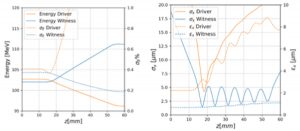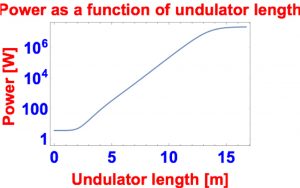
SL_COMB2FEL is a five-year experiment (2019-2023) funded by the CSN 5 of INFN and carried out at SPARC_LAB, aiming at demonstrating the high quality electron beams, as generated by particle-driven plasma acceleration (PWFA), through the final measurement of the Free-Electron Laser (FEL) gain curve.For the success of the proposed experiment, the long-lasting collaboration among LNF, Milan, Roma1, Roma2, Naples and Lecce has been renewed, each unit participating with its own expertise.
This research activity is integrated in the framework of Horizon 2020 to prepare the Design Study of EuPRAXIA (“European Plasma Research Accelerator with eXcellence In Applications”) for the feasibility of a plasma-based user facility, and is of utmost interest for the future EuPRAXIA@SPARC_LAB test user facility.
Based on the experience gained at SPARC_LAB in SL_COMB, we foresee to study, both with simulations and experimental solutions, the impact of plasma in- and out-ramps, plasma jets and non-uniform plasma density profiles on the acceleration efficiency and on the quality of accelerated electron beams, as required to drive a FEL. Furthermore, the successful measurement of the FEL radiation gain curve is strongly dependent on focusing devices to match and transport the beam to the FEL. At SPARC_LAB we plan to integrate active plasma lenses in the conventional transfer line to proper design the matching to the undulator. A transfer line based on active plasma lenses and collimators must be studied also to remove the driver bunch after plasma interaction, allowing the optimization and transport only of the witness beam, which gains energy in the plasma-accelerating module.
The SL_COMB2FEL approach, using a driver beam to excite the plasma wakefield, that accelerates a properly injected witness beam, can guarantee the necessary beam quality to generate SASE FEL radiation in the SPARC undulator, i.e witness energy spread <0.2% and normalized transverse emittance <1 mm mrad, as shown in figure.

In this regard, we have considered the results obtained through a plasma simulation to evaluate the SASE FEL gain length and saturation power in the case of SPARC beam and undulator parameters.

In addition, very recent experimental results have demonstrated the first acceleration of a small energy spread beam in a beam driven PWFA, supporting the feasibility of a plasma-driven FEL.
 INFN-LNF Laboratori Nazionali di Frascati
INFN-LNF Laboratori Nazionali di Frascati